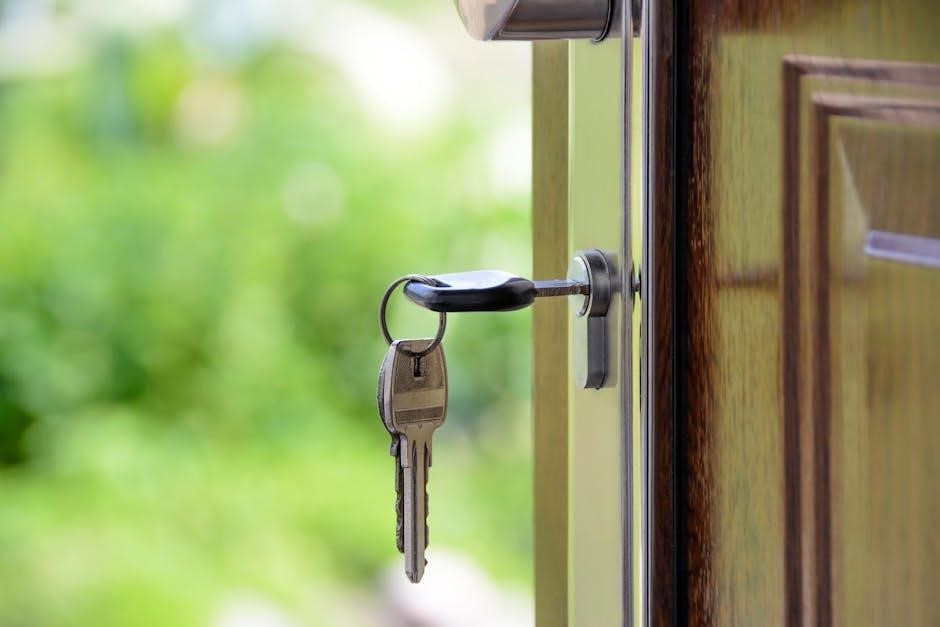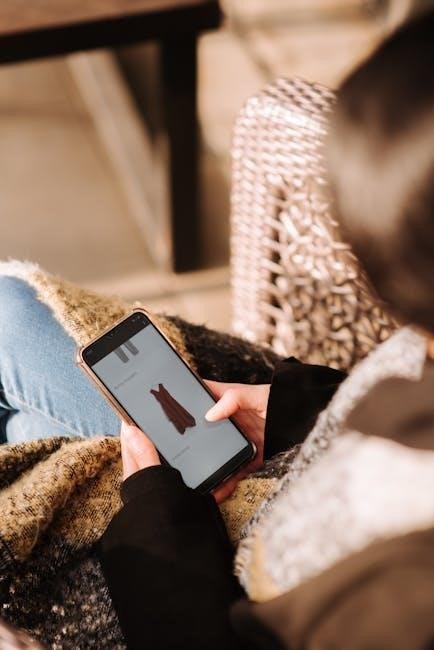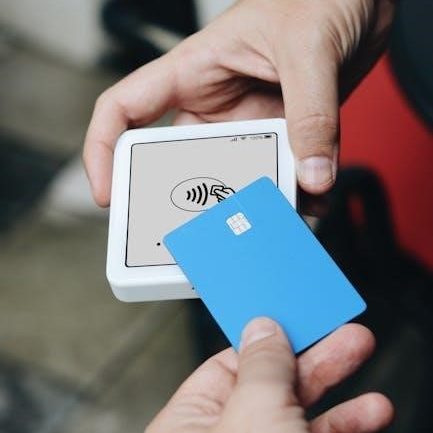Welcome to the ultimate guide for selecting the perfect snowboard! Whether you’re a first-time buyer or an experienced rider‚ this guide will help you make an informed decision by covering key factors like size‚ type‚ and fit to ensure your snowboarding experience is nothing short of exceptional.
Why Choosing the Right Snowboard Matters
Selecting the right snowboard is crucial for maximizing performance‚ comfort‚ and overall enjoyment on the slopes. A properly fitted board tailored to your riding style ensures better control‚ ease of learning‚ and progress. It also prevents frustrations and potential injuries caused by improper sizing or design. Whether you’re a beginner or an advanced rider‚ the right snowboard enhances your ability to navigate various terrains and conditions‚ making every ride more enjoyable and rewarding. Investing time in choosing the perfect board pays off in improved skills and unforgettable experiences on the mountain.
Key Considerations for First-Time Buyers
For first-time buyers‚ prioritizing ease of use and versatility is essential. A soft-flex snowboard offers forgiveness and easier turning‚ making it ideal for learning. Consider a board with a forgiving camber or rocker profile to help with balance and control. Budget-friendly options like LTR models or last season’s designs can provide great value without compromising performance. Additionally‚ renting or demoing a board can offer insights into personal preferences before committing to a purchase. Focus on size and fit to ensure comfort and confidence on the mountain‚ setting the foundation for a positive snowboarding experience.

Understanding Snowboard Types
Exploring snowboard types is crucial for matching your riding style. All-mountain boards offer versatility‚ freestyle boards excel in parks‚ powder boards dominate deep snow‚ and carving boards deliver precision and speed.
All-Mountain Snowboards: Versatility for All Terrains
All-mountain snowboards are designed for riders seeking versatility across diverse terrains. They excel on groomed trails‚ powder‚ and even in the park‚ making them ideal for those who want a board that can handle it all. With a balanced flex and directional shape‚ these boards offer stability at high speeds while maintaining maneuverability. Whether cruising down groomers or venturing into backcountry‚ all-mountain snowboards provide the perfect blend of performance and adaptability‚ catering to both intermediate and advanced riders looking to explore various snowboarding disciplines.
Freestyle Snowboards: Tricks and Park Riding
Freestyle snowboards are tailored for riders who thrive in the park and urban environments‚ focusing on tricks and technical maneuvers; These boards typically feature a true twin shape for switch riding and a softer flex for easier manipulation. With their lightweight construction and poppy cores‚ freestyle snowboards enable riders to perform jumps‚ rails‚ and jibs with precision. Whether you’re a beginner or an advanced rider honing your skills‚ freestyle boards offer the perfect platform for creativity and progression in the park.
Powder Snowboards: Designed for Deep Snow
Powder snowboards are specifically crafted for deep snow adventures‚ offering unparalleled floatation and stability in untouched terrain. These boards typically feature a wider nose and a tapered tail‚ allowing them to glide effortlessly through powder. A rockered profile enhances buoyancy‚ while a stiffer flex provides control at higher speeds. Designed for backcountry exploration‚ powder snowboards are ideal for riders seeking to conquer pristine‚ off-piste landscapes with ease and confidence‚ delivering an exhilarating experience in the deep snow.
Carving Snowboards: Precision and Speed
Carving snowboards are built for precision and speed‚ perfect for riders who enjoy laying down clean‚ powerful turns on groomed trails. These boards usually feature a stiff flex‚ camber profile‚ and a narrow waist‚ enabling sharp edge hold and responsive control. Their design allows for aggressive carving‚ making them ideal for experienced riders who crave high-speed performance and accuracy. Carving snowboards deliver a thrilling experience for those who master their handling‚ offering a perfect blend of power and finesse on the slopes.

Snowboard Construction and Features
Understanding snowboard construction is crucial for choosing the right board. Core materials‚ sidewalls‚ and topsheet durability impact performance‚ while camber vs. rocker profiles affect ride quality and flex patterns.
Materials: Core‚ Sidewalls‚ and Topsheet
The core of a snowboard is typically made of wood‚ offering durability and responsiveness. Sidewalls are constructed from materials like ABS for impact resistance‚ while the topsheet protects the board from scratches. These components work together to enhance performance and longevity‚ ensuring your snowboard withstands various riding conditions.
Camber vs. Rocker: Understanding the Profile
Camber and rocker are two distinct profiles that define a snowboard’s shape. Camber‚ with its upward curve at the tips‚ offers precision and edge hold‚ ideal for carving and speed. Rocker‚ featuring a downward curve‚ enhances float in powder and makes turning easier. Hybrid profiles combine both‚ balancing performance across different terrains. Choosing the right profile depends on your riding style and preferred terrain‚ ensuring optimal control and maneuverability on the slopes.
Flex and Flex Patterns: How It Affects Performance
Snowboard flex refers to its stiffness and responsiveness‚ impacting turning ease‚ stability‚ and overall performance. Softer flex boards are ideal for freestyle and beginners‚ offering forgiveness and easier maneuverability. Stiffer boards excel in high-speed carving and precise control‚ suiting advanced riders. Flex patterns vary‚ with some boards featuring softer tips for better float and pop. Proper flex alignment with your weight and riding style ensures optimal performance‚ making it a critical factor in choosing the right snowboard for your needs and preferences.
Choosing the Right Size and Fit
Proper snowboard size and fit are crucial for optimal performance and control. Ensure the board aligns with your height‚ weight‚ and riding style for a seamless experience.
How to Determine Your Snowboard Size
Determining the right snowboard size involves considering your height‚ weight‚ and riding style. A general rule is to choose a board that reaches between your chin and collarbone when stood upright. Lightweight riders may prefer shorter boards‚ while heavier riders opt for longer ones. Additionally‚ riding style plays a role—freestyle riders often prefer shorter boards for maneuverability‚ while all-mountain riders may prefer longer boards for stability. Always consult a size chart or seek expert advice to ensure the best fit for your needs.
Weight and Height Recommendations
Weight and height are crucial factors in selecting the right snowboard. Riders should aim for a board that complements their body proportions to ensure optimal performance and control. Lightweight individuals may find shorter boards more manageable‚ while heavier riders often benefit from longer‚ stiffer boards for stability. Using a size chart tailored to your height and weight can provide a solid starting point. However‚ personal preference and riding style should also be considered to find the perfect balance between responsiveness and ease of handling. Always test the board if possible to ensure a great fit.

Boot Size Compatibility and Binding Setup
Ensuring your boots fit comfortably within your bindings is essential for optimal performance and comfort. Boot size compatibility varies between brands‚ so check the binding’s size range before purchasing. Proper binding setup involves aligning the boots symmetrically and adjusting the straps for a snug‚ responsive feel. Different binding types‚ such as strap-in or step-in‚ cater to various preferences and riding styles. Always test the setup to ensure ease of movement and control. A well-fitted boot and binding combination enhances stability‚ precision‚ and overall snowboarding enjoyment‚ making it a critical aspect of your gear selection.
Bindings and Accessories
Bindings and accessories are crucial for a seamless snowboarding experience. They enhance performance‚ comfort‚ and safety‚ ensuring your setup is tailored to your riding style and needs.
Choosing the Right Bindings for Your Board
Selecting the right bindings is essential for optimal performance and comfort. Bindings come in various styles‚ such as strap-in and step-in‚ catering to different riding preferences; Ensure compatibility with your snowboard’s width and type. Soft flex bindings suit beginners and freestyle riders‚ while stiffer options are ideal for carving and high-speed runs. Proper fit and adjustability are key to avoid discomfort and enhance control. Always test bindings if possible and consider durability for long-term use.
Essential Accessories: Boots‚ Socks‚ and More
Proper accessories are vital for a comfortable and enjoyable snowboarding experience. Boots are a cornerstone—choose ones with a snug fit‚ waterproofing‚ and adequate support for your riding style. Thermal socks made of moisture-wicking materials like merino wool are ideal for cold days. Gloves or mittens with grip and insulation are essential for control and warmth. Goggles protect your eyes from snow and wind‚ while a helmet ensures safety. Additional gear like a snow jacket‚ pants‚ and base layers complete your setup‚ ensuring you’re prepared for any mountain conditions.

Budgeting and Where to Buy
Setting a realistic budget is crucial when purchasing a snowboard. Research retailers for deals and discounts‚ and consider new vs. used options to find the best value
Setting a Budget for Your Snowboard
Setting a budget is essential for a practical snowboard purchase. Beginner boards start around $300‚ while high-end models can exceed $1‚000. Consider your riding frequency‚ skill level‚ and the need for additional gear like bindings and boots. Allocate funds wisely to balance quality and affordability. Research online for price comparisons and seasonal sales to maximize your budget. Remember‚ investing in a durable board may save money in the long run. Plan accordingly to enjoy your snowboarding adventures without financial strain.
Where to Find Deals and Discounts
Discovering deals on snowboards can enhance your purchasing experience. Online retailers like Evo‚ REI‚ and Backcountry often offer seasonal sales and discounts. Keep an eye out for end-of-season clearance or holiday promotions. Outlet stores and second-hand marketplaces are great for discounted gear. Sign up for newsletters to receive exclusive offers‚ and consider timing your purchase during off-peak seasons. Some shops provide price matching or trade-in programs‚ allowing you to save even more. Explore these avenues to find the best value for your snowboard without compromising on quality or performance.
New vs. Used: Pros and Cons
Choosing between a new and used snowboard involves weighing cost‚ quality‚ and performance. New snowboards offer warranties‚ the latest technology‚ and precise fit options‚ but come with a higher price tag. Used boards are budget-friendly and eco-conscious but may lack warranties and show signs of wear. For beginners‚ used boards can be a cost-effective way to start‚ while experienced riders might prefer the reliability of new gear. Assess your needs and budget to decide which option aligns best with your snowboarding goals and preferences.
Finalizing Your Purchase
Inspect the board for damages‚ negotiate the price‚ and ensure authenticity. A warranty provides peace of mind. Make a confident decision after verifying all details.
Trying Before Buying: Demo Days and Rentals
Testing a snowboard before purchasing ensures compatibility with your riding style. Demo days offer opportunities to try various models‚ while rentals allow extended testing. These experiences help identify the best fit and performance‚ reducing the risk of buying the wrong board. Many resorts and shops provide these services‚ making it easier to make an informed decision. Don’t hesitate to take advantage of these options to find your perfect match on the slopes.
Negotiating Prices and Checking for Damages
When purchasing a snowboard‚ negotiating prices and inspecting for damages are crucial steps. Many retailers allow price negotiations‚ especially during sales or end-of-season events. Always check the board for any dings‚ scratches‚ or delamination‚ as these can affect performance. Pay attention to the base‚ edges‚ and top sheet for signs of wear. Ensure the warranty is valid and ask about return policies. A thorough inspection and smart negotiation can save you money and ensure you get a high-quality board that meets your needs.
Ensuring Authenticity and Warranty
Ensuring the authenticity of your snowboard is crucial to avoid counterfeit products. Look for genuine manufacturer logos‚ serial numbers‚ and documentation. Verify the warranty offered by the manufacturer‚ which typically covers defects in materials and workmanship for a specific period. Check if the warranty is transferable and what it entails. Purchasing from authorized dealers or reputable retailers minimizes the risk of buying fake or damaged goods. Always keep your receipt and warranty paperwork for future reference‚ ensuring your investment is protected.




